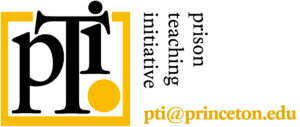How I Learned to Work WITH Students as a Co-conspirator for Educational Equity

Author: Laura Fittz, Affiliated Doctoral Student, Race Research and Justice (RRJ)
I am a white female educator. I previously perpetuated the school-to-prison pipeline, but now I am working to dismantle it.
“You wrote me up!?” slamming his backpack down, the student slumped down in his seat, crossed his arms, and refused to speak to me the rest of the class. As a first-year English teacher at a high school in an urban district in Nashville, Tennessee, I did not know any other disciplinary tools other than punishment, and I certainly was not aware of the consequences of my punitive actions. Instead, when I felt frustrated at a student, I would “write them up” (office referral), and the student would receive punishment in the form of detention, in-school suspension, or out-of-school suspension. Ironically, this punishment would not only not solve the problem, but it would also create an additional problem of the student missing class, being (understandably) angry with me, and falling behind in their learning. While I taught English, these practices are seen in all classrooms, including STEM-related ones, where some students often feel disconnected from both the content and the teacher based on not feeling like a “math” or “science” person. These disconnections can also lead to disconnections when it comes to student engagement, resulting in behaviors that can lead to the sorts of punishments I described above.
As one of the many white, cisgender women teachers in the United States, I was unknowingly contributing to the school-to-prison pipeline, a phenomenon that disproportionately affects Black and Brown youth, where a pattern of punishment and exclusion in school leads to future involvement in the carceral system.
During my first year of teaching, a colleague invited me to attend the International Institute of Restorative Practices training where I learned about the Restorative philosophy and practices. From this training, my own personal reading of Dr. Beverly Daniel Tatum’s Why Are All the Black Kids Sitting Together in the Cafeteria and Michelle Alexander’s The New Jim Crow, watching Ava DuVernay’s 13th, and exploring Howard Zehr’s Changing Lenses: Restorative Justice for Our Times, I became aware of the school-to-prison pipeline, our nation’s racist history of incarceration, the negative effects of punishment practices, and the positive possibilities of Restorative Practices.
While punishment practices are based on exclusion, marginalization, and retribution (Milner, 2020) and lead to phenomena such as the school-to-prison pipeline (Kang-Brown et al., 2013; Noguera, 2003) and the Opportunity Gap (Milner, 2020), Restorative Practices seek to build relationships, foster community-building, and repair harm (Zehr, 2002).
I began to implement Restorative Practices (RP) in my classroom and found that RP gave me a framework for how to build community and solve problems with my students. While I continued to teach, I also pursued my MEd at Vanderbilt and had the opportunity to take courses at Riverbend Maximum Security prison in Nashville. Getting to listen to and learn with the incarcerated persons at Riverbend reinforced my understanding that negative experiences in school (notably exclusionary punishment) can contribute to later negative experiences with the carceral system.
Learning from the incarcerated persons at Riverbend and from my high school students prompted me to start a student-led Restorative Practices team, a model now known as “Restorative Student Leaders.” Restorative Student Leaders work to disrupt the school-to-prison pipeline in schools and communities by providing opportunities for youth to be listened to and engaged with in solving problems in their communities and beyond. So far, Restorative Student Leader teams have talked with school board members about changing K–5 suspension policies, advocated for RP training for all Tennessee teachers with legislators at the Capitol, discussed disciplinary data with all district principals, broken up fights, facilitated Restorative circles, mentored teachers, and traveled to other schools to share the power of Restorative dialogue. I have personally seen both the frustration and harm of punitive practices and the power of listening to and working with students through Restorative Practices.
I am lucky to continue to learn with and from these student leaders as a PhD student at Vanderbilt Peabody in Dr. Milner’s Initiative for Race Research and Justice. Through our affiliation with STEM-OPS, I hope to continue listening to the voices of those most affected by the school-to-prison pipeline and work together with the courageous youth working to improve our schools—and our society—through Restorative Practices. A great place for us all to begin listening to those voices is on the STEM-OPS podcast—The sySTEM Impacted.
_____
Please take 1 minute to fill out this survey about how this blog post may have influenced you or helped you learn new information. Your response will help STEM-OPS learn about our shared impact on messages about people impacted by incarceration and help us improve our approach to changing societal narratives.





